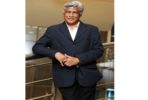Three individuals, whose stories are featured in the book Living The Singapore Story: Celebrating Our 50 Years 1965-2015, tell GAO WENXIN ([email protected]) what life was like in the early years of independence
He has been in the satay business for 70 years and knows the exact flavours that appeal to the locals.
“Singaporeans feel that sweet satay tastes better. I know because I sell,” said Mr Ngalirdjo Mungin, 94, in Malay.
Although Singaporeans have enjoyed the same taste of Mr Ngalirdjo’s satay for decades, things have not always been the same for the satay man.
Before he set up his stall at Sims Drive Market And Food Centre in the 1970s, he used to peddle his satay as a street hawker.
“Back then, I had to look for customers. Now, my customers come to me.”
Mr Ngalirdjo came from Java just after World War II in 1945.
AVOIDED BEING SOLD
“Many immigrants here would be sold to Malaysia as farmers but I did not want to be sold,” he said.
Instead, he lived with other Javanese satay sellers at 97, Jalan Sultan, and was paid 10 cents a day to make satay.
There, he learnt the tricks of the trade and later sold his own satay.
He would carry two huge baskets of ingredients and a portable charcoal grill, and cover the area between the Esplanade area and Geylang.
“I also sold satay at Jalan Besar because I would get more business when there was a football match on,” said Mr Ngalirdjo, who occupied a space at the back entrance of the stadium.
Satay was sold at two cents when he first arrived, then five cents in 1947 and 10 cents in the 1960s.
Fifty sticks a day was considered good business but the jovial man said he was quite blessed to get orders of hundreds of sticks from towkays.
He met his late wife, Madam Kamisah Dadi, thanks to his satay trade. She was selling her mother’s kuih (Malay for cake) at the time.
After they got married, Madam Kamisah also helped him make satay.
His current stall is named after her.
The couple have 11 children and one of their sons runs the stall. But Mr Ngalirdjo still keeps an eye on the food quality.
“I still haven’t retired. I hope my story will encourage people to do their own business and to work for themselves,” he said.
Source: http://news.asiaone.com







